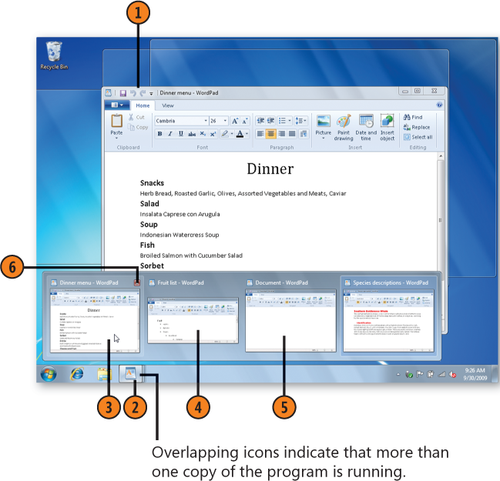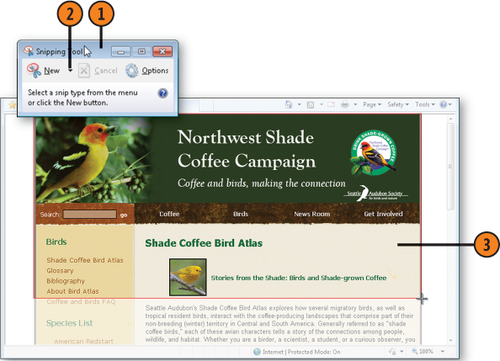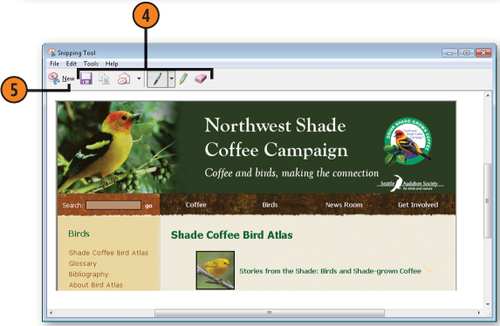1. Running Multiple Copies of One Program
You might want to have more than one file open in
the same program—two different documents in WordPad, for example. If you
open an additional existing file from a Jump List, the file will appear
in a new copy of the program. But if you want to open a blank version
of the program, you'll need to take extra steps. With multiple copies
open, Windows gives you some very nice tools to figure out which copy
you want to access. The thumbnails of open windows and the full-screen previews are available only when your computer is set to use the Aero
Glass feature. If it's set to use a basic theme, such as the Windows 7
Basic theme, you'll see a list of open windows instead of previews when
you point to the program icon.
1.1. Open and Use Another Copy of a Program
Right-click the program icon on the taskbar, and choose either of the following:
Point to the program icon to see thumbnails of the open files.
Point to the thumbnail of the file you think you want to show in a full-screen preview.
If that isn't the file you want, point to a different thumbnail to see a full-screen preview of a different file.
To switch to the file you want, click the thumbnail for that file.
If you want to close a file without switching to it, point to the thumbnail and then click the Close button.

2. Copying Your Screen Content
You can use the Snipping Tool program to capture an image—or a snippet—of a Web page, or just about anything else on your computer screen. You can then e-mail the image, save it, or paste it into a file in another program.
2.1. Snip an Image
With the content you want to capture displayed on the screen, click the Start button, type snip in the Search box of the Start menu, and choose Snipping Tool from the menu to start the program.
Click the down arrow next to the New button, and select the type of snip you want:
Free Form Snip to capture any shape
Rectangular Snip to capture a rectangular snip
Window Snip to capture a program or a folder window
Full-Screen Snip to capture everything on your screen
Capture
your snip. For free-form and rectangular snips, drag out the shape with
the mouse (while holding down the left mouse button) or a stylus or
finger, depending on your system. For a window snip, click or tap
anywhere in the window. The full-screen snip is captured automatically.
In the Snipping Tool window, use any of the tools to save, copy, send, or modify the snip.
Click New to capture another image, or click the Close button to close the Snipping Tool.

